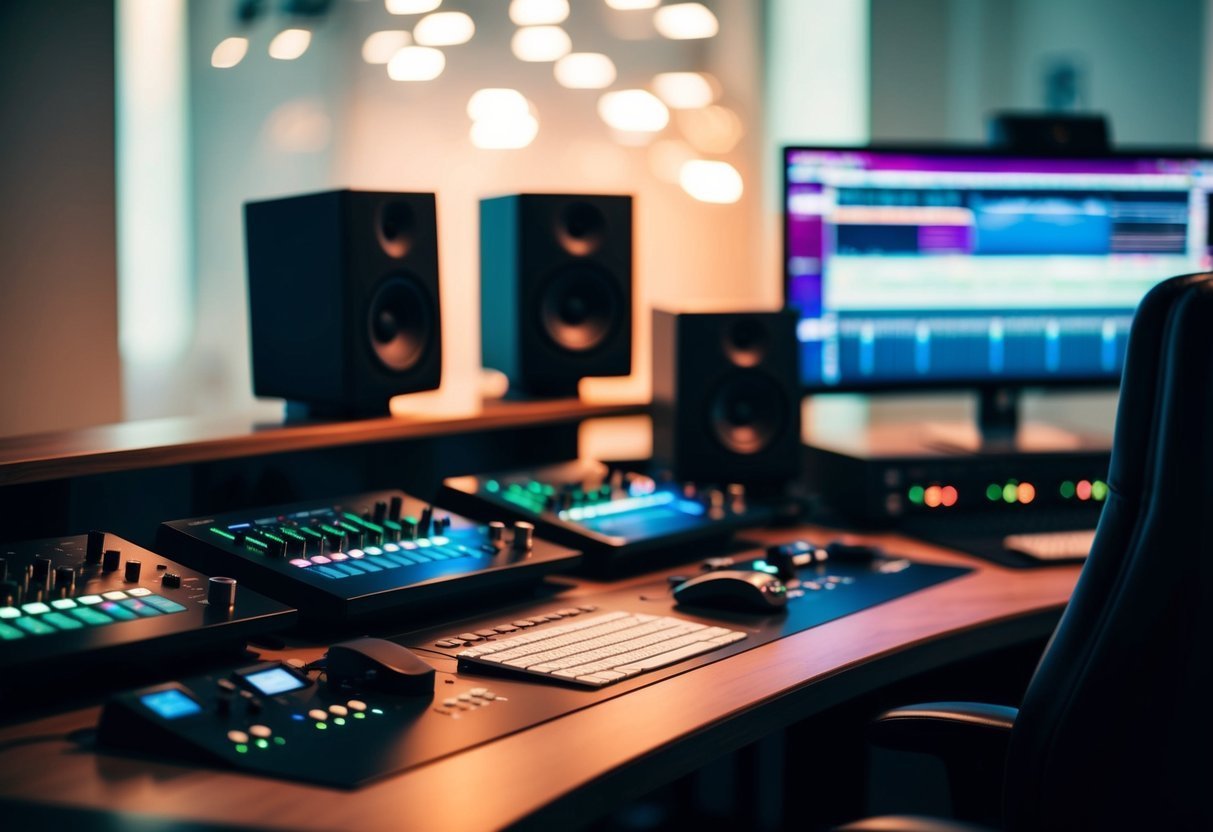Imagine getting hands-on with your music production setup, feeling the faders glide under your fingers just like in a traditional studio.
Control surfaces offer the tactile control you crave, transforming your digital audio workstation (DAW) from a virtual environment into an interactive playground. Incorporating a control surface into your setup can enhance your workflow and inject some real-world feel into your digital projects.
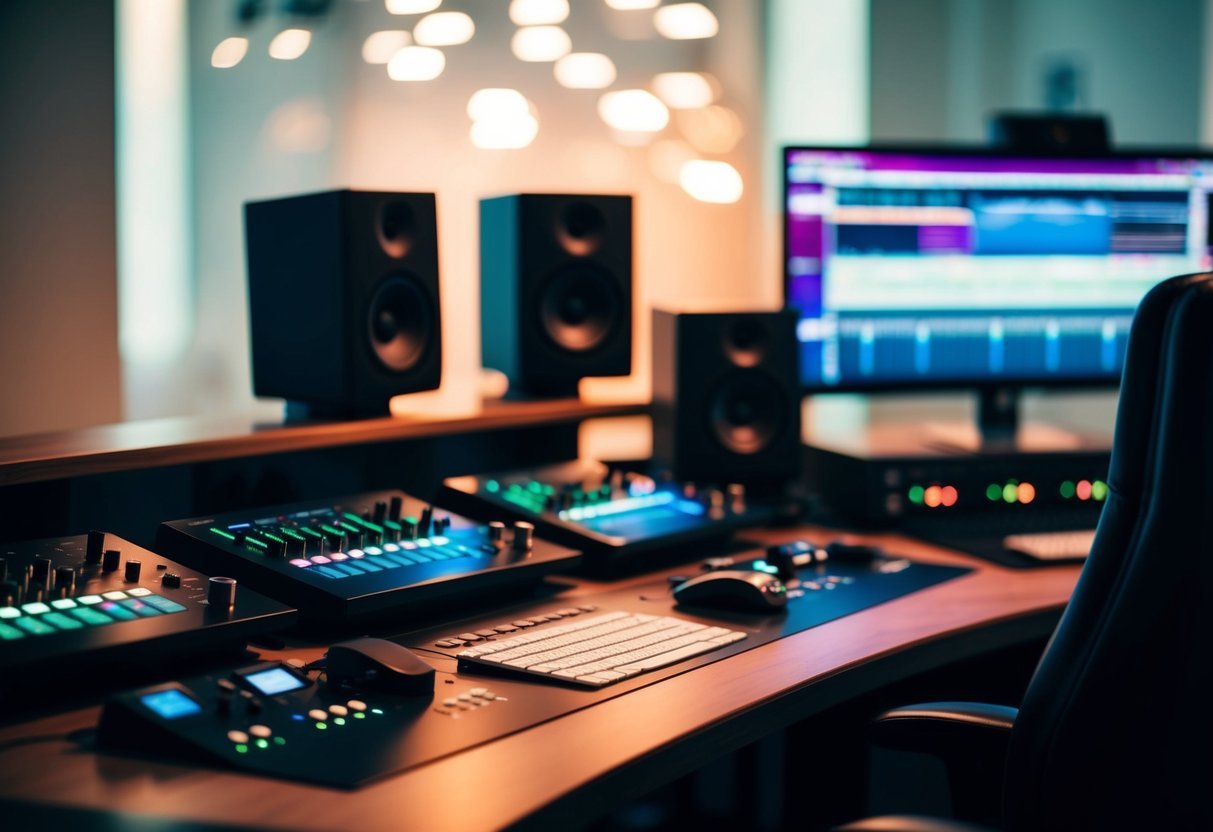
Whether you’re looking to achieve precision with fine-tuned adjustments or streamline your mixing process, these devices offer an exciting alternative to mouse and keyboard.
You can employ something like the Akai Professional MIDImix for a budget-friendly yet feature-rich experience.
If portability tops your list, then options like the Korg nanoKONTROL2 will meet your needs with ease.
As you explore these options, you might discover tools that perfectly match your musical style and technical requirements.
The market covers everything from professional picks like the Zoom LiveTrak L-12 to affordable choices suited for home studios.
Each surface brings a unique set of features, making it easier for you to find the right fit for your creative process.
Essentials of Control Surfaces
Control surfaces bridge the gap between digital audio workstations (DAWs) and the tactile experience of traditional mixing consoles.
They provide a hands-on approach to music production that enhances workflow and creativity.
Understanding Control Surfaces
Control surfaces are physical interfaces that connect to your DAW, enabling you to control parameters like faders, pans, and transport functions without relying solely on a mouse and keyboard.
These devices range from simple, portable options like the Korg nanoKONTROL2 to more complex systems like the Mackie MCU Pro.
Some control surfaces are designed for specific DAWs, offering enhanced integration and dedicated controls.
Others are more versatile, working well across different DAWs with customizable button mappings.
The primary goal is to emulate the feel of an analog console, providing you with intuitive and accurate control over your projects.
Connectivity options can include USB, MIDI, or even wireless, giving you flexibility in how you set up your studio.
This means you can tailor your control surface to fit your workflow, whether you’re in a home or professional studio environment.
Benefits of Tactile Control in Music Production
Having a tactile interface can significantly enhance the music production process.
With physical faders and knobs, you gain precision and efficiency in making adjustments.
This tactile feedback can also lead to a more engaging and immersive mixing experience, allowing you to make better-informed decisions in real-time.
Many producers appreciate the tangible connection control surfaces offer, which can make intricate automation tasks feel more intuitive.
It’s easier to make subtle changes and quickly respond to the demands of a session.
For those transitioning from analog to digital setups, control surfaces offer a familiar interaction model.
This ensures the ability to maintain a streamlined workflow while benefiting from the flexibility of DAWs.
DAW Integration and Workflow
Integrating a control surface with your DAW can significantly enhance your music production experience.
It offers a tactile interface, streamlining your workflow by giving you direct control over mixing, editing, and arranging.
Optimizing DAW Workflow with Control Surfaces
A control surface lets you make music feel physical again.
By using faders, knobs, and buttons, you can mix and edit in a more intuitive way.
No more endless clicking with your mouse; instead, you get to actually “touch” your music.
This setup allows you to work faster.
Tasks like adjusting levels, panning, and tweaking effects become more efficient.
You also reduce screen time, focusing more on creativity.
Most importantly, having a control surface can make your sessions more fluid and engaging, helping you maintain your creative flow.
Control Surface Compatibility
When choosing a control surface, consider your DAW’s compatibility.
Some models work seamlessly with popular DAWs like Pro Tools, Logic Pro, and Studio One.
Look for surfaces offering custom mappings and presets.
Compatibility also affects how much control you gain. Motorized faders can sync with your DAW, reflecting changes in real-time.
The better the integration, the more you’ll enjoy features like visual feedback and dynamic displays.
Always ensure the chosen control surface will work smoothly with your setup for maximum efficiency and enjoyment.
Hardware Features
When it comes to control surfaces for music production, the hardware features play a pivotal role in shaping your workflow.
Elements like faders, buttons, and rotary encoders offer varying levels of control and functionality, ultimately affecting the efficiency of your studio setup.
Faders and Knobs
Faders are crucial on any control surface.
They primarily adjust volume levels.
Many surfaces feature motorized faders, which can automatically adjust to your project’s saved settings, providing a fluid mixing experience.
Knobs give you hands-on control over various parameters, such as pan or EQ settings.
They are often combined with MIDI functionality to allow seamless integration with your digital audio workstation (DAW), making your mixing more intuitive and precise.
Buttons and Transport Controls
Buttons are indispensable for quick access to frequently used functions like play, stop, and record.
These transport controls streamline your workflow, letting you focus on creativity rather than navigation inefficiencies.
Some control surfaces include additional buttons for MIDI mapping.
This means you can assign them to specific functions within your DAW, providing greater flexibility and custom control over your projects.
Rotary Encoders and Additional Inputs
Rotary encoders offer infinite rotation, ideal for parameter adjustments needing fine-tuning.
They differ from traditional knobs, which can have physical limits.
These encoders are highly valued for controlling precise pitch and other time-based effects.
Additional inputs often mean USB or MIDI ports, which provide the necessary connections to expand your setup.
These inputs enable integration with other gear, allowing you to build a more versatile and robust studio environment focused on music production.
Setting Up a Control Surface
Setting up a control surface can vastly enhance your music production experience by improving workflow and offering a tactile interface.
You’ll need to consider connection types and integration with audio interfaces to maximize potential.
Connection Types: USB, MIDI, and Ethernet
When connecting your control surface, there are a few options to consider. USB connections are the most common and are usually straightforward.
They allow for plug-and-play functionality with most modern devices.
You will find USB connections reliable, especially for home studio setups.
MIDI connections might feel old-school, but they offer compatibility with a wide range of devices. Ethernet connections are often used for more professional environments.
They provide low-latency connections and are ideal for complex setups where multiple surfaces need to interact seamlessly.
Integration with Audio Interfaces
Integrating a control surface with your audio interface ensures that your hardware and software work together efficiently.
Most modern audio interfaces support USB or MIDI control, allowing for easy integration.
It’s crucial to check compatibility between your control surface and audio interface.
Choose equipment that supports seamless communication to avoid unnecessary setup complications.
Many interfaces and control surfaces come with dedicated software for integration, which can simplify the process.
If your interface supports it, consider using Ethernet connections for faster data exchange.
This setup allows you to focus more on creativity rather than technical issues.
Popular DAW Control Surfaces
When stepping into the world of music production, using DAW control surfaces can make a significant impact on your workflow.
Whether you are on a budget or looking for high-end features, there are options for everyone.
Entry-Level to Professional Options
For those just starting, the PreSonus FaderPort delivers essential features with a single motorized fader, making it perfect for solo producers.
If you’re expanding, the PreSonus FaderPort 8 and 16 are excellent, with more faders and controls for larger projects.
Looking for a more advanced experience? The Mackie MCU Pro offers a solid foundation with its 9 motorized faders, which helps bridge the gap between beginner and professional.
It’s compatible with most DAWs, making it a popular choice.
The Icon QCon Pro X is another versatile option, supporting a range of DAWs and offering motorized faders and customizable controls.
In-Depth Look at Top Models
Diving deeper into high-end models, the SSL UF8 stands out with its intuitive design, complementing the Solid State Logic UC1 which provides dedicated channel control.
These devices ensure a professional level of precision and flexibility.
The Avid S4 is often hailed for its seamless integration with Pro Tools, offering state-of-the-art control over audio projects.
It’s designed for studios needing reliable, scalable solutions.
Automating with Control Surfaces
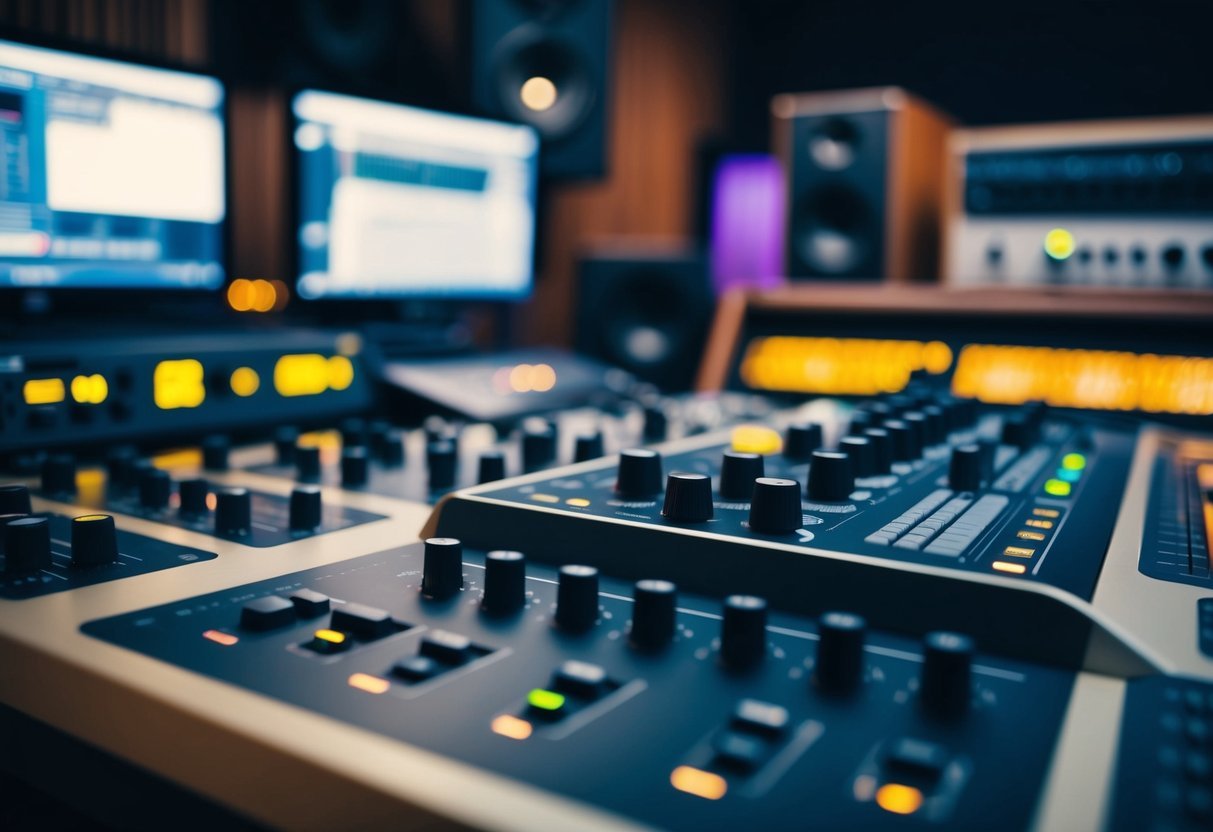
Control surfaces offer a tactile advantage for managing automation in your digital audio workstation (DAW).
They help you achieve precise adjustments in both mixing and mastering, making your production workflow more intuitive.
The Art of Writing Automation
When you’re writing automation with control surfaces, you’re not just tweaking knobs; you’re crafting dynamic changes in your audio tracks. Automation allows for real-time adjustments in parameters such as volume, panning, and effects.
You can physically move faders and knobs to capture the nuance that’s hard to achieve with a mouse.
This hands-on approach lets you record subtle movements, providing an authentic touch to your tracks.
Also, with MIDI compatibility, you can pre-program detailed parameter changes and then modify those tracks live.
This flexibility can be particularly useful for working on intricate DAW parameters. Automating these aspects can make transitions smoother and help create an immersive sound experience.
Automation in Mixing and Mastering
Mixing and mastering can go to the next level with the strategic use of automation.
In mixing, control surfaces allow you to adjust levels and effects across multiple channels efficiently.
It elevates your mix by crafting dynamic builds or drops through gradual changes in volume or reverb.
On the mastering front, automation can make subtle adjustments that enhance the overall sound.
For instance, adjusting the EQ at different song stages can bring out specific frequencies.
A control surface gives you the ability to manually ride faders, pinpointing the perfect moments for these tweaks.
This method paves the way for a polished final product.
Integrating control surfaces in your automation tasks can transform how you approach sound manipulation, making your music production both efficient and creatively fulfilling.
Integrating Software Instruments
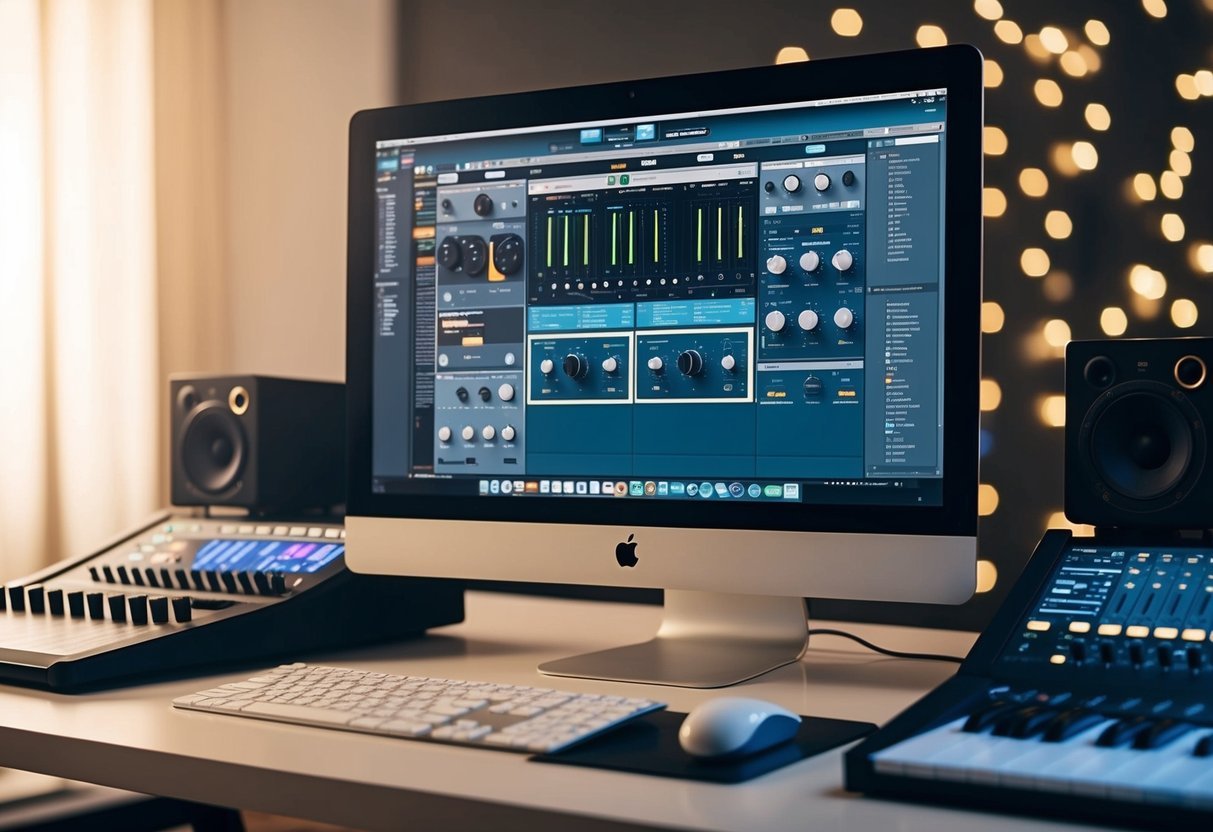
Adding software instruments to your music production setup can expand your creative toolkit.
This involves using control surfaces to work with soft synths, allowing you to manipulate sound in real time with your DAW software.
Control Surfaces and Soft Synths
Using a control surface with soft synths enhances your music production process.
These devices can function as a MIDI controller, offering tactile control over software instruments.
By assigning knobs, faders, and pads to specific functions within your music software, you gain hands-on command over sound parameters.
You should also consider compatibility with your DAW software.
Many control surfaces come with templates that fit popular DAWs like Ableton Live or Logic Pro, making integration smoother.
With the right setup, you can produce more intuitive and expressive performances.
Customizing Your Control Surface

Customizing your control surface can significantly enhance your workflow by adapting to your specific music production needs.
Tailoring assignable buttons and personalizing control maps allow you to streamline tasks and align the setup with your creative process.
Assignable Buttons for Unique Needs
Assignable buttons give you the flexibility to tailor your control surface to fit your specific needs.
These buttons can be programmed to execute various functions, such as triggering effects or navigating your DAW interface.
When setting up assignable buttons, think about the tasks you perform most frequently.
Consider grouping similar functions together to keep your layout intuitive.
Also, make sure to label buttons clearly, as this is crucial for efficiency, especially in complex projects involving multiple layers and tracks.
Tactile control through these buttons can be a game-changer, offering a physical interface that supports quick decision-making.
Experimenting with different configurations can reveal the layout that best enhances your creative flow, making your production process more hands-on and responsive.
Personalizing Control Maps
Personalizing control maps allows you to define your workflow by selecting which parameters your control surface will manipulate.
This involves assigning knobs, faders, and buttons to various aspects of your DAW, from volume and pan settings to plugin controls.
Think about the tools and effects you regularly use and map controls that give you tactile access to them.
Being strategic with your control map setup ensures your most-used features are literally at your fingertips.
Templates can save you time by providing predefined control maps for popular DAWs.
These templates are a good starting point, but you need to customize further to tailor the setup to your unique way of working.
Studio and Home Setup
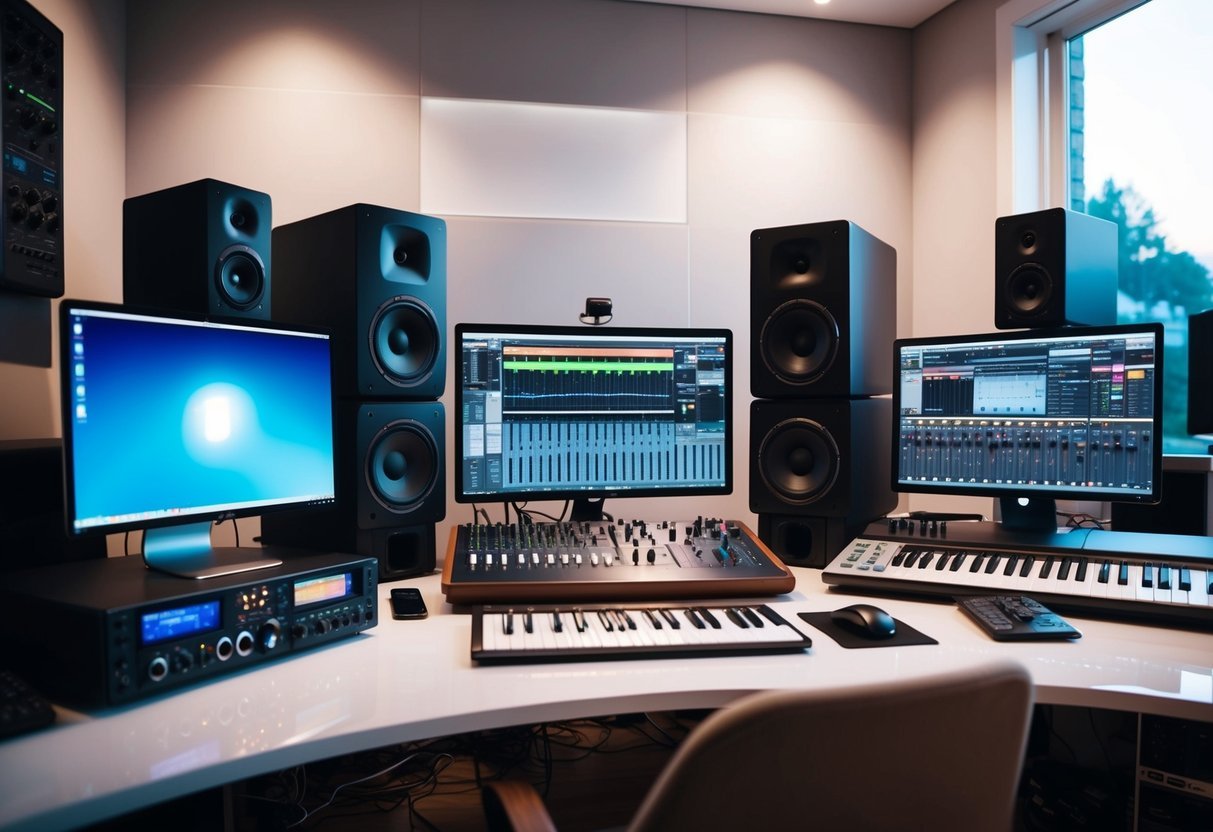
Setting up a home studio involves making crucial decisions about space and equipment to ensure a seamless workflow, especially when integrating a control surface.
Selecting the right control surface is vital for achieving hands-on control without cluttering your workspace.
Choosing a Control Surface for Your Space
When deciding on a control surface, size and functionality are key.
Space constraints often dictate how large your control surface can be.
Compact models like those with a minimal number of faders are ideal for smaller home studios.
They provide basic functionality without overwhelming your setup.
If you have more room, consider a device with more faders and encoders for a broader range of control.
Multi-fader options offer smoother transitions and a more intuitive interface, making your production experience more efficient.
Consider your budget and choose a product that balances features with affordability, taking note of what you truly need versus optional extras.
Integration with Home Studio Equipment
Integration with existing equipment is fundamental.
Ensure your chosen control surface is compatible with widely-used DAWs like Studio One or others you might be using.
Connectivity options such as USB or MIDI must align with your current setup to avoid unnecessary purchasing of adapters or additional gear.
It’s also important to consider the control surface’s ability to manage various functions in your digital audio workstation.
Look for compatibility with your audio interface, microphones, and other essential gear to avoid technical headaches.
Testing different setups can offer insight into what best fits your working style, ensuring a smooth and efficient production process.
Control Surfaces Beyond Music
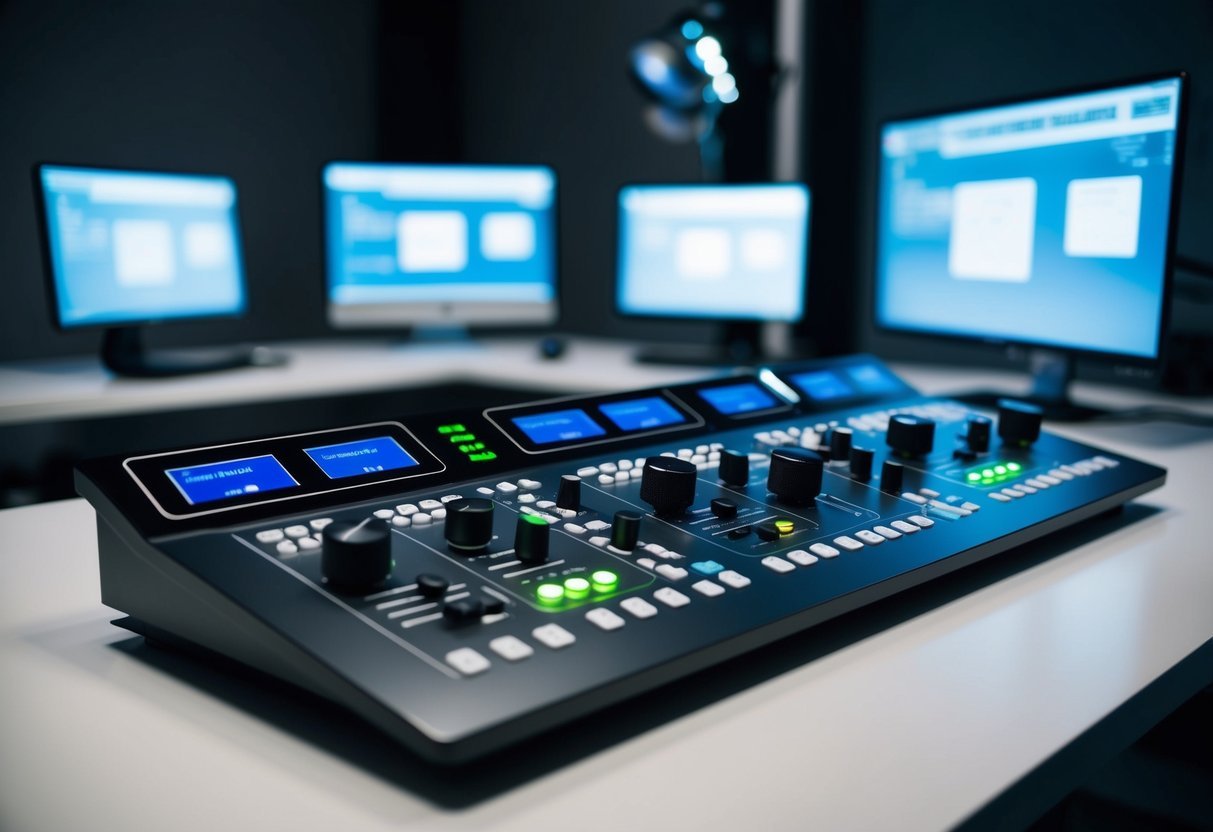
Control surfaces, while often seen in music production environments, find their applications extending into other audio disciplines.
Their tactile interfaces make them ideal tools not just for musicians but also for creative professionals in fields like podcasting and multimedia production.
Podcasting and Multimedia Production
When working on podcasts, using a control surface can simplify your setup.
DAW controllers provide hands-on access to volume faders, mute buttons, and effects, making live audio adjustments easy.
This tactile approach feels more intuitive than relying on a mouse, especially during live events or interviews.
In multimedia production, control surfaces offer precision for video and audio editing.
They can be programmed to handle cutting tasks, effects triggers, and even scene transitions.
Their versatility allows you to seamlessly integrate them into your existing workflow.
Frequently Asked Questions
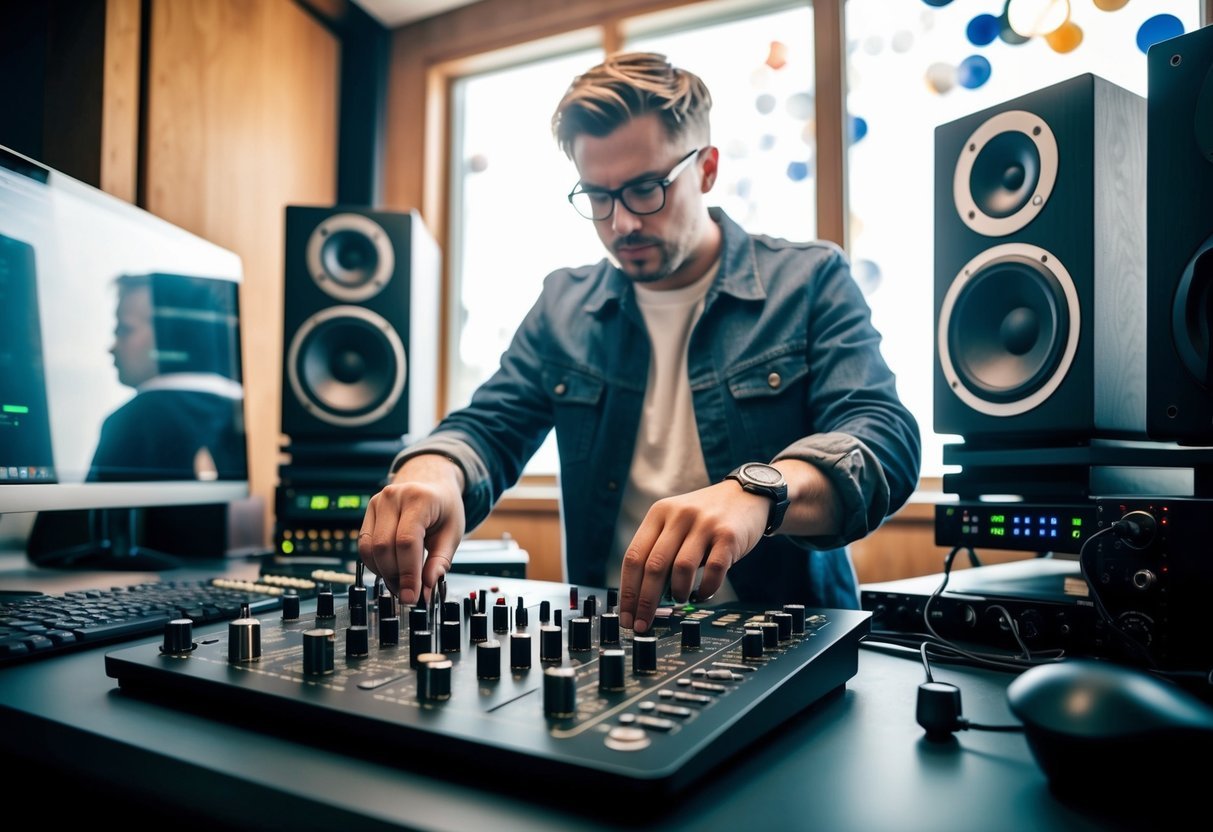
Control surfaces bring a hands-on, tactile experience to music production, making it easier to tweak parameters in your DAW.
Depending on your needs and budget, you can choose from a range of devices, each offering unique features to enhance your workflow.
What are the top-rated DAW control surfaces for home studios?
For home studios, the Akai Professional MIDImix is highly recommended due to its excellent DAW integration and affordability.
The Korg nanoKONTROL2 is a great pick if portability is a priority.
How does a mixer-style control surface enhance music production?
A mixer-style control surface provides direct access to faders, pans, and mixer buttons.
This makes your work more efficient and gives you real-time control over audio settings, allowing for precise adjustments without relying solely on a mouse.
Can you explain the benefits of integrating a MIDI control surface with a DAW?
Integrating a MIDI control surface with your DAW allows you to manipulate software instruments and effects with physical faders and knobs.
This interactive approach can speed up your workflow and enhance creativity by making parameter adjustments more intuitive.
What should I look for when choosing a control surface for Logic Pro X?
When selecting a control surface for Logic Pro X, consider compatibility and support for customization.
Look for devices that offer functionality like fader control, plugin parameter adjustments, and an easy-to-navigate interface.
Is a control surface necessary for efficient music production workflow?
While not essential, a control surface can improve your workflow by providing tactile interaction with your DAW.
This can help reduce time spent navigating on-screen menus, allowing you to focus on creativity and detail.
What are the key differences between budget and high-end control surfaces?
Budget control surfaces tend to have fewer features and simpler builds but still offer basic DAW integration.
High-end models often include advanced features, such as motorized faders, touchscreens, and extensive plugin controls, providing a more immersive production experience.

